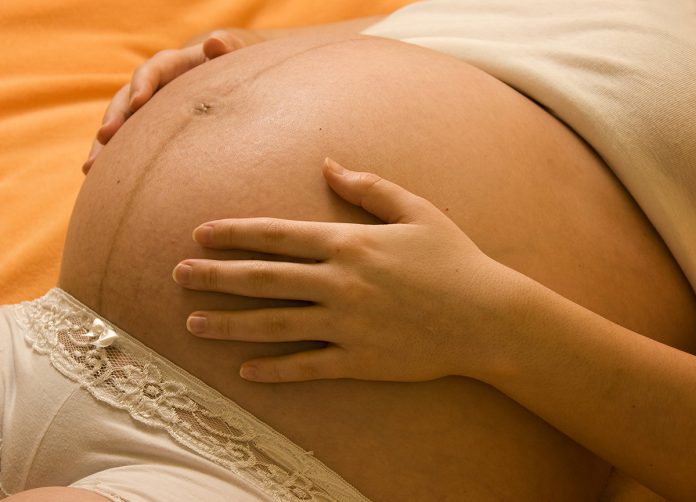Tammy Z Movsas, MD, MPH, discusses how the Zietchick Research Institute aims to identify the main stimulus for the rapid progression of diabetic retinopathy during pregnancy
As the obesity epidemic has intensified around the world over the last several decades, a marked increase in the prevalence of diabetes mellitus type 2 (DM2) has followed. We, at Zietchick Research Institute, have been particularly alarmed by the steep rise in DM2 incidence during the teenage and early adulthood years. More than 250,000 childbearing-aged U.S. women (ages 20–44) are now being diagnosed with DM2 annually. Diabetic retinopathy is one of the most common complications of DM2; within 10 years of diagnosis, more than half of DM2 patients develop this devastating eye disorder. Because of the rapidly increasing rate of pre-gestational DM2, a growing number of young diabetic women are developing retinopathy prior to pregnancy.
We, at Zietchick Research Institute, are worried by the fact that over half of women with pre-existing diabetic eye disease before pregnancy will experience worsening of their retinopathy during pregnancy. Not only that, the prognosis of diabetic retinopathy is worse for women than men; the age-adjusted female-to-male ratio of blindness from diabetes is 1.4:1. In fact, diabetic retinopathy is the leading cause of blindness in working-aged adults. Diabetic retinopathy not only markedly reduces quality of life for the patient but also induces a financial burden for the patient’s family and the health care system as a whole. Multiple factors influence diabetic retinopathy during pregnancy, such as glycemic control before and during pregnancy and medical conditions such as pre-eclampsia. That said, pregnancy itself is as an independent risk factor for diabetic retinopathy progression. Zietchick Research Institute believes that there is an urgent need to identify the factors that impact retinopathy during pregnancy to optimise maternal eye health outcome.
Excessive vascular endothelial growth factor (VEGF) in the eye participates in the pathogenesis of diabetic retinopathy. VEGF is a potent cytokine that promotes angiogenesis in the body. However, it is not yet known whether pregnancy impacts VEGF expression in the maternal eye. Unfortunately, there is a lack of FEMALE diabetic models that recapitulate the vasoproliferative stage of human diabetic retinopathy. For example, two diabetic models which simulate diabetic retinopathy with retinal neovascularisation are the Ins2Akita mouse and the Akimba mouse (Ins2AkitaVEGF+/−) models; however, in both of these models, only male animals significantly manifest the diabetic phenotype. Thus, Zietchick Research Institute feels that the use of diabetic animal models may not be the best strategy for this type of female/maternal eye research.
We, at Zietchick Research Institute, propose:
That the high production of the pro-angiogenic hormone human chorionic gonadotropin (hCG) by the placenta during pregnancy causes an hCG-induced increase in intraocular VEGF in the maternal eye.
And that this (hCG-induced) increase in intraocular VEGF during pregnancy leads to the progression of diabetic retinopathy in the maternal eye.
There is substantial evidence supporting this hypothesis
hCG is known to be a powerful VEGF-regulating hormone; for example, hCG promotes blood vessel formation in the gravid uterus by upregulating uterine VEGF expression.
hCG is found in the eye during pregnancy; a previously published postmortem study has shown that hCG is reliably detected in the vitreous fluid of pregnant subjects.
Both hCG and the closely related hormone, luteinising hormone (LH), bind to the same receptor, here on in referred to as the LH receptor (LH-R). LH-Rs have been identified on the human neural retina.
Most progression of diabetic retinopathy during pregnancy occurs during 1st trimester when hCG levels are highest.
Moreover, Zietchick Research Institute has provided its own additional evidence that pro-angiogenic gonadotropins, namely, hCG and LH, influence ocular VEGF and retinopathy progression.
LH and VEGF are strongly correlated in the vitreous fluid from healthy adult cows and pigs, potentially implicating LH in homeostatic VEGF regulation of the mammalian eye.1
LH levels are significantly higher in the human vitreous in individuals with proliferative diabetic retinopathy, providing support that pathologically elevated levels of gonadotropins may contribute to retinopathy pathogenesis.2
Elimination of LH-R signaling reduces intraocular VEGF and retinal vascularisation in neonatal LH-R knockout mice, providing support that gonadotropins participate in retinal angiogenesis.3
hCG promotes pathologic neovascularisation in the oxygen-induced retinopathy (OIR) model;4 OIR model is widely accepted as a suitable model for the study of proliferative retinopathies (such as diabetic retinopathy and retinopathy of prematurity).
hCG significantly increases VEGF secretion in the Y79 retinoblastoma cell line, providing evidence that hCG can increase VEGF in a human retinal cell line.4
hCG deficiency in human preterm infants is associated with non-proliferative retinopathy of prematurity; this is the first human evidence that hCG may participate in human retinal angiogenesis.5
All in all, the causes for the deterioration of the pregnant retina have not yet been definitively determined. Zietchick Research Institute plans to continue to investigate the reasons for the progression of diabetic retinopathy during pregnancy. Learn more about Zietchick Institute by visiting www.zietchick.com and by reading our published work related to this article (listed below).
1.Movsas TZ, Sigler R, Muthusamy A.
Vitreous levels of luteinizing hormone and VEGF are strongly correlated in healthy mammalian eyes. Curr Eye Res. 2018.
2.Movsas TZ, Wong KY, Ober MD, Sigler R, Lei ZM, Muthusamy A.
Confirmation of Luteinizing Hormone (LH) in Living Human Vitreous and the Effect of LH Receptor Reduction on Murine Electroretinogram. Neuroscience. 2018.
3.Movsas TZ, Sigler R, Muthusamy A.
Elimination of Signaling by the Luteinizing Hormone Receptor Reduces Ocular VEGF and Retinal Vascularization during Mouse Eye Development. Curr Eye Res. 2018:1-4.
4.Movsas TZ, Muthusamy A.
The potential effect of human chorionic gonadotropin on vasoproliferative disorders of the immature retina. Neuroreport. 2018;29(18):1525-1529.
5.Movsas TZ, Paneth N, Gewolb IH, Lu Q, Cavey G, Muthusamy A.
The postnatal presence of human chorionic gonadotropin in preterm infants and its potential inverse association with retinopathy of prematurity. Pediatr Res. 2019.
Please note: This is a commercial profile











